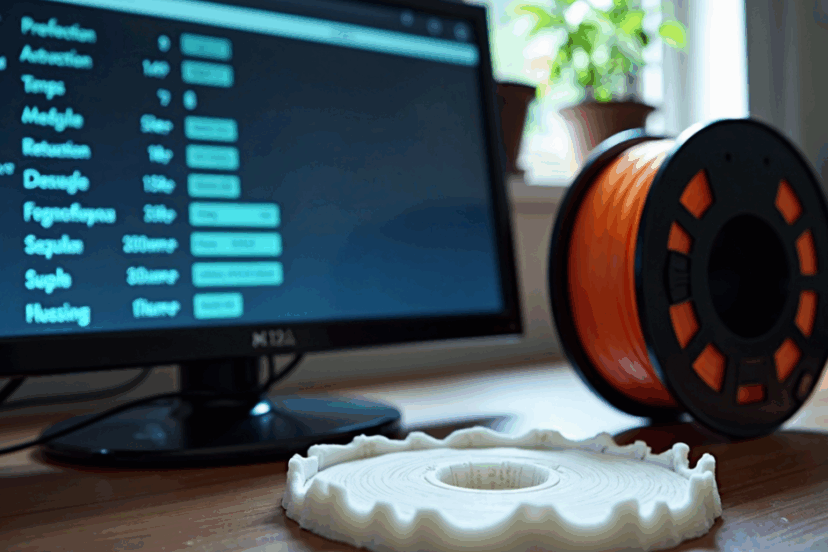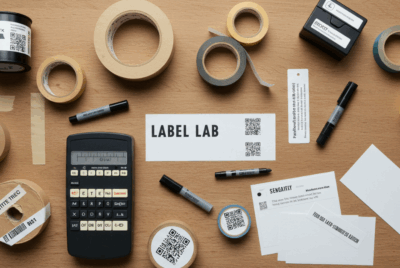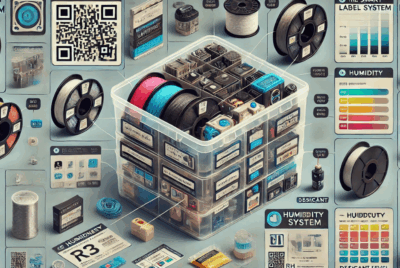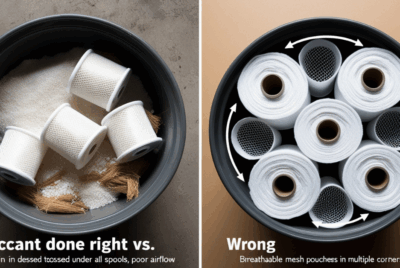How can poor filament storage affect print quality over time?
1. Is It Your Printer or Your Filament?
Your printer’s been perfect for weeks.
Same slicer. Same settings.
But suddenly, your prints are stringy, brittle, or just plain awful.
Before you dive into retraction tweaks and nozzle replacements, ask yourself:
How have I been storing my filament?
2. The Moisture Factor: Your Hidden Enemy
Most filament failures aren’t caused by bad slicing or mechanical issues.
They’re caused by moisture—and moisture comes from bad storage.
Filament absorbs water over time, even from slightly humid air.
This hidden enemy sneaks in, degrades your material, and quietly sabotages every layer.
3. Top Print Issues Caused by Bad Storage
Poorly stored filament leads to:
- Blobs and stringing
- Popping noises during extrusion
- Weak, brittle prints
- Surface roughness or bubbling
- Clogs and under-extrusion
- Inconsistent dimensional accuracy
And worst of all?
You waste time troubleshooting the wrong problem.
4. Stringing, Blobs, and Popping: The First Red Flags
Moist filament boils from the inside out during extrusion.
This creates:
- Tiny steam explosions
- Bubbling in the filament
- Stringing between travel moves
- Blobs where material oozes unpredictably
You might try to fix it in your slicer—but it’s not a slicer issue. It’s a humidity issue.
5. Layer Adhesion Problems You Can’t Blame on the Slicer
Bad storage degrades the filament’s bonding properties.
Even if your layers look clean, they’ll separate under minimal pressure.
This makes functional parts unreliable—and decorative parts fragile.
6. Inconsistent Extrusion and Surface Roughness
You’ve dialed in your printer.
Temps, speeds, flow rates—all perfect.
But prints are coming out grainy, with rough surfaces or zits.
Moist filament causes inconsistent flow, which ruins:
- Surface detail
- Smooth finishes
- Dimensional accuracy
7. Brittle Prints and Weak Structural Parts
One of the biggest signs of moisture damage?
Your print breaks the second you flex it.
Even if the print looks fine, the internal layer bonding is compromised. This happens most often with:
- PLA
- Nylon
- PETG
- TPU (which may stretch weirdly when damaged)
8. Clogged Nozzles and Hot End Headaches
Moist filament expands when heated. That can:
- Clog your nozzle
- Burn inside the hot end
- Leave carbon residue or black specks in future prints
- Require full disassembly to fix
A $2 desiccant pack could have prevented it. 😬
9. Warping and Poor Bed Adhesion
If your filament absorbs moisture:
- It may warp more easily, especially in ABS and PETG
- The first layer won’t stick right
- You’ll fight lifting corners and curling edges
It’s not your bed temp—it’s your filament condition.
10. Color Fading and UV Exposure
Bad storage = more than just humidity.
If your filament is:
- Stored near windows
- Exposed to sunlight
- Left in open air
You risk:
- Color degradation
- Loss of shine or gloss
- Surface powdering or fading
This especially affects silk PLA, PETG, and specialty filaments.
11. How to Tell If Storage Is the Problem
Ask yourself:
- Does the filament snap easily when bent?
- Do I hear popping or crackling when extruding?
- Is my hygrometer showing high RH in my bin?
- Have I stored this spool open for weeks or months?
If you answered “yes” to any of those, your storage setup needs help.
12. Moisture Retention Timeline by Filament Type
| Filament | Time to Moisture Absorption (50%+ RH) |
|---|---|
| PLA | 2–3 days |
| ABS | 3–5 days |
| PETG | 1–2 days |
| Nylon | A few hours |
| TPU | 12–24 hours |
| PVA | Instantly |
Even in a sealed room, filaments begin degrading quickly once exposed.
13. Why Even Unopened Spools Can Go Bad
Factory-sealed ≠ immune forever.
- Over time, vacuum bags lose their seal
- Silica gel inside becomes saturated
- Moisture can seep in through small leaks
If you bought a spool a year ago and never opened it? Dry it anyway.
14. Prevention Tips That Protect Print Quality
- ✅ Dry filament before use, especially after long storage
- ✅ Use vacuum bags and airtight bins
- ✅ Add silica gel (color-changing is ideal)
- ✅ Use a filament dryer if you live in humid areas
- ✅ Label spools with last dried and opened dates
- ✅ Store in cool, dark, low-humidity rooms
Prevention is cheaper than reprinting or replacing nozzles.
15. Final Thoughts: Store It Right or Print It Twice
Every print starts with filament.
If your storage fails, your print quality will too—no matter how great your printer is.
So whether you’re a weekend hobbyist or a full-time maker:
💡 Store it dry. Store it sealed. Store it smart.
It’s the difference between printing confidently—or fighting endless frustration.
❓FAQs
- Can filament go bad even if it’s never opened?
Yes. Over time, seals can fail and silica gel inside becomes saturated. - Is it worth buying a filament dryer for just a few spools?
Yes—especially for sensitive materials like PETG, Nylon, or TPU. - Will poor storage permanently ruin filament?
If it’s just moisture, drying can restore it. But UV or heat damage can be irreversible. - Can bad filament damage my printer?
Yes—moist filament can clog nozzles or degrade your hot end over time. - How often should I dry filament for best print quality?
If it’s been open for more than a week (especially in humid areas), dry it before your next big print.




